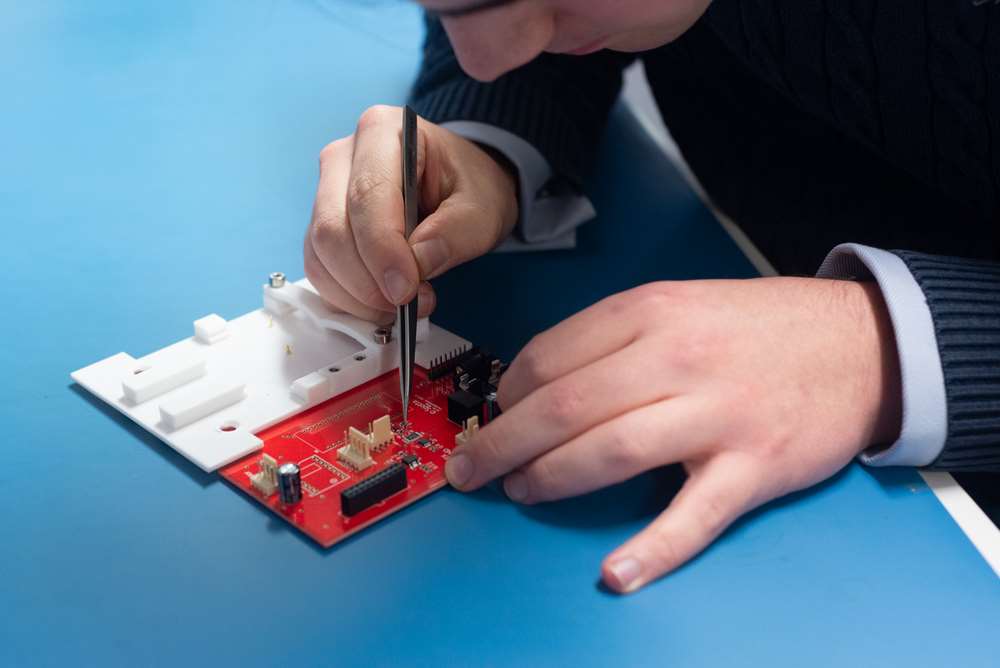
By Robert Fryers, CEO and co-founder, Spotta
Gartner predicted that building automation will be the segment with the largest growth rate at 42% in 2020. While Coronavirus may stifle this growth initially, the shift to smart buildings has to accelerate to meet core efficiency and cost-reduction goals in many company’s bids for survival.
The lock-down has put many plans on-hold and has impacted existing budgets as all businesses assess cash flow and investment. The coronavirus is going to decimate many industries and only the leanest, most efficient players are going to survive.
Companies that embrace new technologies give themselves every possible competitive edge over the old way of doing things. Thus it’s essential that facilities managers turn towards technology for advanced cost-cutting and efficiency measures to reduce operational costs.

Robert Fryers
Smart buildings use a series of strategically placed Internet of Things (IoT) devices that monitor building performance to bring benefits from staff productivity to sustainability through sensors and automated applications. They also play a role in improving the experience of staff and visitors. This is particularly poignant at a time when hygiene and well-being comes under scrutiny in public buildings.
IoT solutions have advanced to such a stage that they’re capable of helping businesses adhere to regulations, while also protecting the business from damage. Proximity sensors used for non-contact detection of objects are being used in car parks to indicate parking availability and can be used to manage people numbers in confined areas – especially relevant in social distancing measures. While pressure sensors are capable of detecting fluctuations or drops in pressure in water systems, used in conjunction with water quality sensors they can provide an important role in monitoring water quality.
IoT devices are a welcome tool to businesses in addressing these challenges and to facilities managers who struggle to identify problems that are hidden from view. New devices and applications are capable of sharing information through mobile apps, online portals or email to provide a complete performance review of the building and highlight the problem areas. As building management becomes more complicated, facilities managers must have access to the right data for decision-making in order to be able to understand the problem and respond by identifying the appropriate solution.
Modernising facility operations
Many companies have reported 10 – 15% cost savings from IoT projects, so it’s important that facilities managers look at the value devices bring and the operational savings they offer to choose the right technology. This is particularly challenging for older buildings to unlock the benefits within their building infrastructure. Facilities managers must look to proven technologies that work in their environment. Although new smart buildings give the wow factor, we must remember that they have benefitted from the full integration of technologies from the point of concept.
The opportunity of IoT systems to revitalise revenue and reinvent staff resourcing are vast. We’ve seen the arrival of robot vacuum cleaners to assist cleaning teams, hotel mini bars that identify when and what has been taken, voice and movement controlled lighting and sound systems – but IoT is going to go much further.
Hospitality businesses and residential buildings will come under greater scrutiny to not only meet operational needs but also the expectations and experiences of the visitor. Buildings including care homes, retirement villages, hotels, student accommodation and short-term rentals will need to identify the best strategic investment to achieve building efficiency and ensure occupant satisfaction. In an economically challenging and competitive environment, reputation will be one of the influential factors to long-term success, requiring facilities managers to put the comfort of guests and residents high on their agenda.
From a staff resource perspective, using detectors and monitoring systems will enable facilities managers to deploy staff immediately to problem areas whether it’s replacing missing towels, emptying bins or dealing with pests, without having to do manual checks. This minimises time and training costs in a period which is likely to see staffing challenges and high staff turnover rates.
Addressing age-old problems
The advancement and diversification of IoT devices allows facilities managers to address age-old problems at the property. Artificial Intelligence is advancing the role of detectors to provide information and insight to problems previously monitored by trained staff. Using sensors and machine learning, detectors are able to assess and identify the problem providing the necessary insight for the facilities management team to deal with it appropriately.
Detectors have evolved to help in areas where previously only people or animals were capable of doing, and at a time when staff resources are at an all time low and business risk is high a new approach must be taken. To illustrate, pest control for many hospitality businesses and public buildings is a big problem, which can impact business reputation, be at risk from litigation, and especially now – come under scrutiny from health and hygiene authorities.
In recent years we’ve seen pest traps become increasingly intelligent, capable of identifying even some of the smallest of pests like bed bugs. Strategically placed IoT devices analyse pests through image sensors and machine learning, which informs facilities staff of the type of pest so it can be dealt with appropriately – reducing human monitoring and training – while enabling the facilities management team to be responsive with the right treatment.
At a time when revenue and cash flow is essential to the very survival of the business, issues need to be dealt with before they become a financial and operational problem.
Compatible network systems
The challenge for facilities managers is to find a way to connect these systems and ensure each device is capable of working in buildings without interference. Coverage is essential for older buildings to become smart; we’ve all experienced wifi dropping off in large, old and complex buildings – which is no good for IoT devices that need an ‘always on’ approach to deliver any value.
Suitable IoT networks use technologies such as LoRa (short for long-range) wireless radio because it covers a long range at low power and low cost, unlike troublesome WiFi systems. With a robust LoRa network, facilities managers can onboard new smart devices more quickly in the race to modernise, reduce costs and provide better living and working environments.
Future of smart sensors
Market demand shapes product development, with creative approaches to engineering and problem solving, and as businesses look to smarter technologies to solve resource-heavy problems we will see a greater diversification of IoT devices. With the greater availability of technology, understanding of Artificial Intelligence and the commercial benefits that have been proven by IoT in recent years, we’ll begin to see higher levels of adoption in older buildings.
Facilities managers have the opportunity now to work with the wider organisation to identify potential threats and find detection solutions that will help them identify problems quicker, innovating how they minimise risk and keep staff resources contained.
The survivors and winners will need to be more efficient, therefore it is imperative that facilities management adapts to enable this. Doing this successfully will be an essential factor for the long term success for their businesses in challenging financial circumstances.


